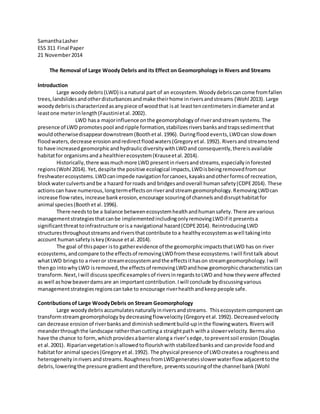Large woody debris (LWD) naturally accumulates in rivers and streams, where it provides important geomorphic functions like decreasing flow velocities, trapping sediment, and creating habitat. However, humans often remove LWD due to risks to infrastructure and recreation. Removal of LWD can significantly alter river geomorphology by increasing flow rates and bank erosion. Case studies show that reintroducing LWD or beaver dams can help restore river complexity and ecosystem health. Management strategies aim to balance ecosystem needs with human safety concerns.




